Growing & Foraging for Mullein (Plus Harvesting & Preserving tips!)
In this article, you’ll learn how to forage for mullein flowers, leaves, and roots, then how to harvest and preserve them!

Common mullein (Verbascum thapsus) is a favorite summer plant to forage! It has a unique look and lots of healthy benefits.
Once you learn about mullein and the things you can make from it, you’ll probably start noticing it everywhere – especially on roadsides or wherever the soil has been disturbed.
Related: Want to learn how to use mullein once you’ve grown or foraged it? Check out this article:
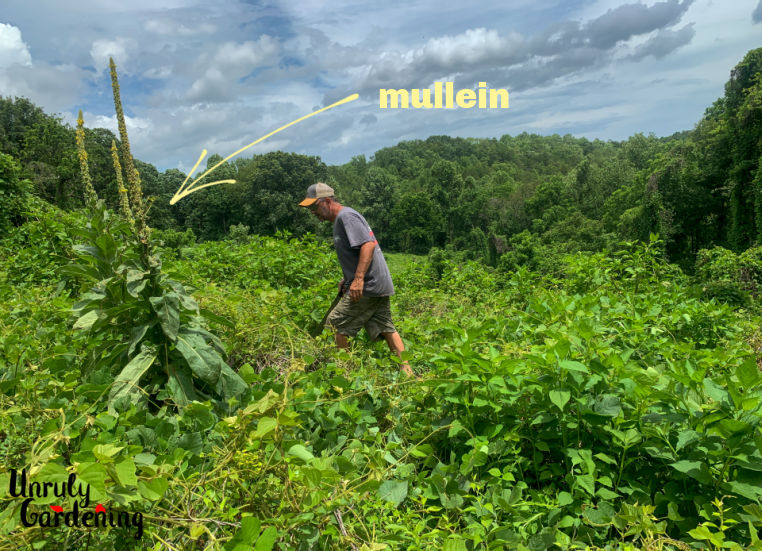
We have about 3 acres of invasive kudzu, and mullein grows all throughout it, shooting up and completing much of its growth before kudzu takes off for the year and starts covering it up.
How Mullein Grows
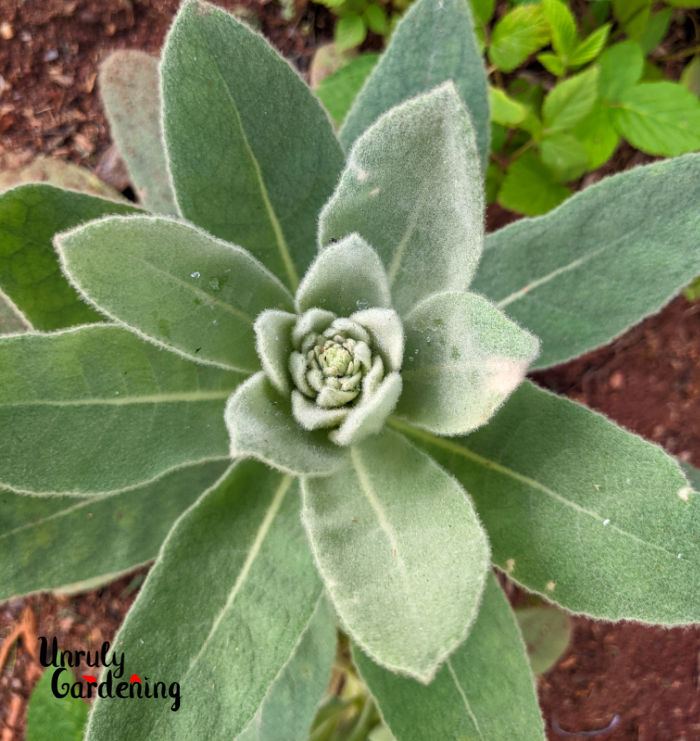
Mullein is a biennial plant – that means it completes its growing cycle over two years.
During the first year, it forms a rosette of fuzzy basal leaves, then during the second year, each rosette grows a tall flower spike (anywhere from 2 to 8 feet tall) covered with individual fuzzy green flower buds, that eventually open up, revealing five-lobed yellow flowers.

Much of the time the plant produces a single flower spike, though I’ve also found plants with more than one, especially later in the season.
The leaves are soft and wooly on all sides, and rubbing a leaf feels similar to flannel. Like flannel, some people enjoy the feel, and others find the texture irritating.
If you make an infusion with the leaves, then be sure to strain the fine hairs out with a square of old (clean) t-shirt or a coffee filter.
How to Grow Mullein from Seed
If you don’t have mullein growing where you live, consider starting a few plants from seed.
The seeds need light to germinate and can be scattered over lightly worked ground in full sun, then pressed into the soil. With plenty of sunshine, moderate water, and time, you’ll have mullein plants!
Mullein reseeds easily in the wild, and the same is true when growing purposefully in your garden.
You can buy mullein seeds from Strictly Medicinal Seeds.
It’s recommended to direct sow mullein because it forms a taproot and doesn’t really like to be disturbed once it’s growing in a spot!

How to Forage for Mullein
It’s easiest to identify mullein when it’s flowering, because it has a very distinctive flower stalk.
The flowers of common mullein are sulfur yellow and have 5 lobes.
When foraging, it’s helpful to carry along a good plant ID app for your phone (I love and constantly use the PictureThis Plant Identifier app) and at least one or two foraging/plant guides suitable for the area you live in.
As with all plants you gather from the wild, make sure you have permission to gather from an area, and avoid any growing on roadsides, since those areas are usually sprayed with herbicides during the growing season and can contain environmental contaminants from passing traffic.

Only a few flowers open on the stalk each day, so it’s helpful to visit your mullein plants every day or two during the flowering stage.
Always leave behind plenty of unpicked flowers too, for the pollinators to enjoy, and also to make sure the plants reseed and start the growth cycle again for next year!
Mullein Lookalikes
When it’s flowering, it’s easy to identify mullein because of the distinctive flower stalk.
However, the younger plants can sometimes be mixed up with other plants.
It’s good to know the different possibilities you might spot, while you forage for mullein.
Lambs Ear
Lambs ear (Stachy byzantina) has a more grayish tone and more distinctive “hair” compared to the fuzziness of mullein. It spreads in clumps instead of forming rosettes, and also has pinkish purple flowers, instead of yellow.
This video by herbalist jim mcdonald is a must watch if you’re confused about the two plants:
early spring mullein vs lamb’s ear… with herbalist jim mcdonald (YouTube)

Evening Primrose (Oenothera biennis)
I’ve also seen a few mix-ups between evening primrose (Oenothera biennis) and mullein.
It too is a biennial that forms a rosette of basal leaves the first year, and flowers the second. Evening primrose is not fuzzy like mullein though and as you can see by the photo above, the lance shaped leaves are very different.
Evening primrose grows tall and has stalks with yellow flowers, but the flower buds aren’t round little balls, are spaced further apart, and each flower opens in the evening.
(It’s really amazing to observe an evening primrose plant when it’s nearing twilight. The flower buds will suddenly unfurl right before your eyes. Fun to watch!)
Above is a photo of evening primrose in my garden – notice that the flowers have four petals. Mullein flowers have five lobes.
Evening primrose is used in many ways and is not a toxic lookalike, but it’s not the same as mullein.
Other Possible Lookalikes
Some people mix up young mullein with foxglove – here’s a great video that shows the visual difference:
Mullein vs. Foxglove -Be sure that your plant ID is correct! (YouTube)
There’s also the rare mullein foxglove (Dasistoma macrophylla), which is threatened in a couple of states. Since it’s threatened, if you come upon any of these plants, they should not be disturbed.
Mullein Foxglove (Illinois Wildflowers Site)
When to Harvest
Summer, or whenever the plant is blooming is the time to harvest mullein flowers.
The first year leaves are often used, but can be picked and used throughout most of the growing stage, including when flowering, though be sure to check out the note about drying larger leaves below. Choose the freshest cleanest leaves; leave behind any that are yellowed, browned, or dried.
The root is usually harvested from first year plants, or second year plants early in the season before flowering – this is where you want to be certain you’re harvesting mullein.
Harvesting Tip: When you harvest, you may notice little bugs, especially hiding in the flowers. Inspect well as you gather and gently shake or knock any little critters back onto the mullein plant, instead of bringing them home with you.
Video: Foraging Mullein
Here’s a slideshow highlighting mullein.(Sometimes an ad plays first, but the video will start right after. The video player won’t show up if you have an adblocker.)

How to Dry & Preserve Mullein
The flowers can be spread over a paper towel or screen and allowed to air dry for several days. If using to make infused oil or tincture, go ahead and use them right away. You can store dried flowers for tea in brown paper bags or jars, out of sunlight for several months. Once they’ve started losing color, they’ve started losing potency.
The leaves are trickier to dry since they’re so thick. Be sure to pick the leaves when they’re completely dry – no dew or rain on them.
It helps to cut the leaves in portions, starting right down the middle. (I learned this handy trick from Making Plant Medicine by Richo Cech – an awesome book!)
You can air dry leaves, cut into smaller pieces, on screens, but you can also use a dehydrator, set to 95 to 100 degrees F. Finely sliced washed roots can be dried in a dehydrator too.

Dried leaves can be stored in paper bags or jars, out of direct light for about 9 to 12 months, or until they start losing color.
Both leaves and flowers can be infused in oil to make oil and salves (recipes at our sister site – The Nerdy Farm Wife):
The infused oil is also commonly used for ear aches. (Drop a few drops of the gently warmed oil into your ear and hold a heating pad or hot water bottle over it. Not for swimmer’s ear though.)
The root can also be scrubbed and chopped, then tinctured right away while it’s fresh. (I use the imprecise folk method to make – 1 part chopped root, covered with 2 parts high proof vodka or everclear. Example: 1/4 cup chopped root to 1/2 cup vodka.)
At our house, we use this remedy for occasional flare-ups of back pain caused by an old construction injury/fall. (A few drops of tincture mixed with a spoonful of raw honey, taken 2 to 3 times per day, and before bedtime.) Mullein root tincture has an affinity for treating back pain.
Our articles are for information and idea-sharing only. While we aim for 100% accuracy, it is solely up to the reader to provide proper identification. Be sure to seek out local foraging classes and plant walks, and invest in mushroom and foraging guides suitable for the area you live in, since some wild foods are poisonous, or may have adverse effect.

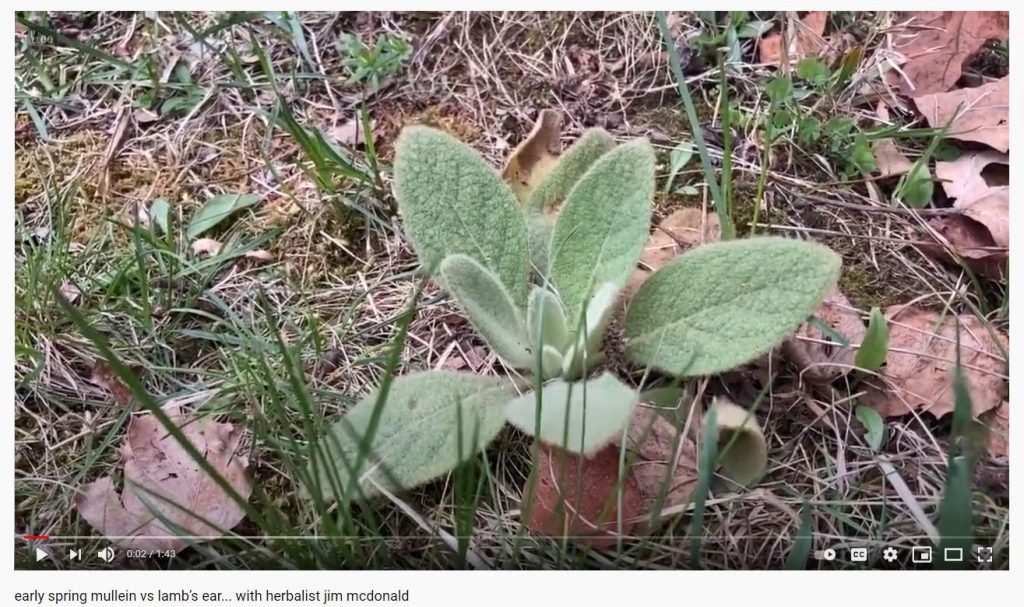
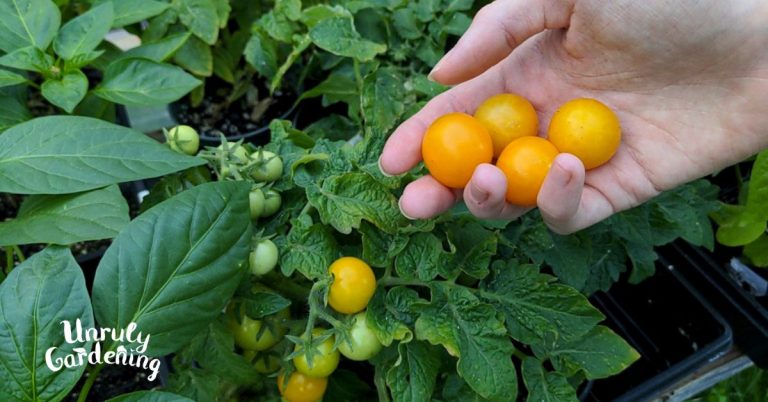
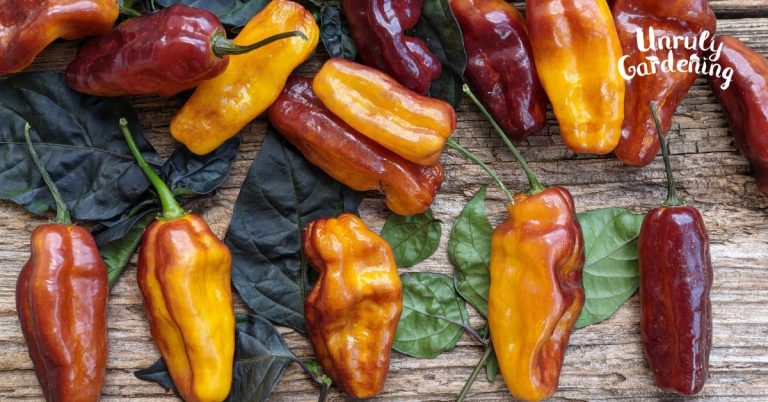
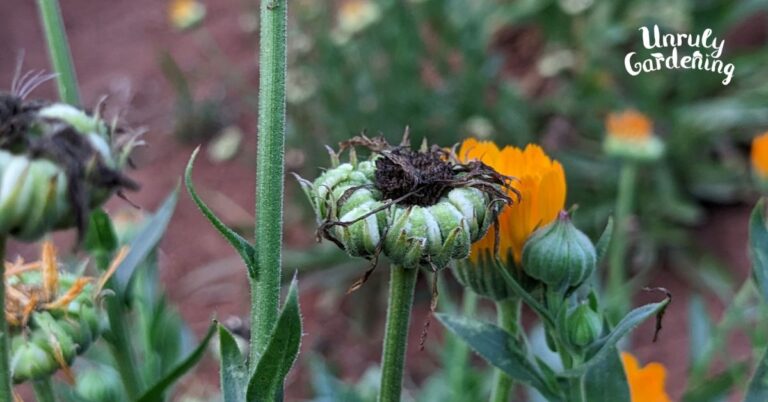
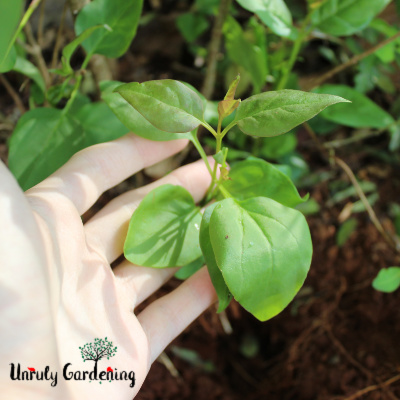
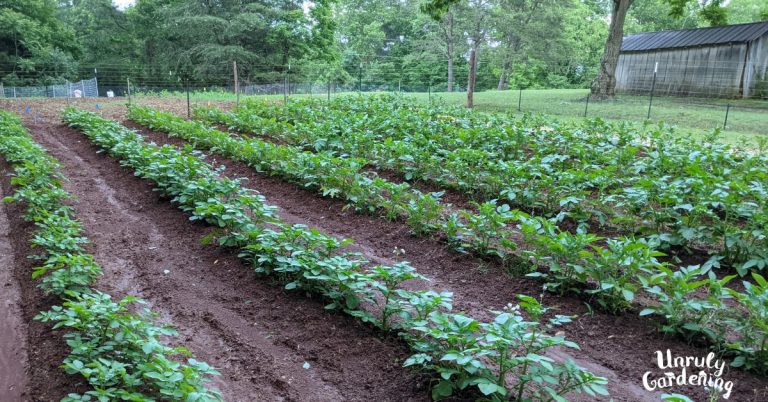
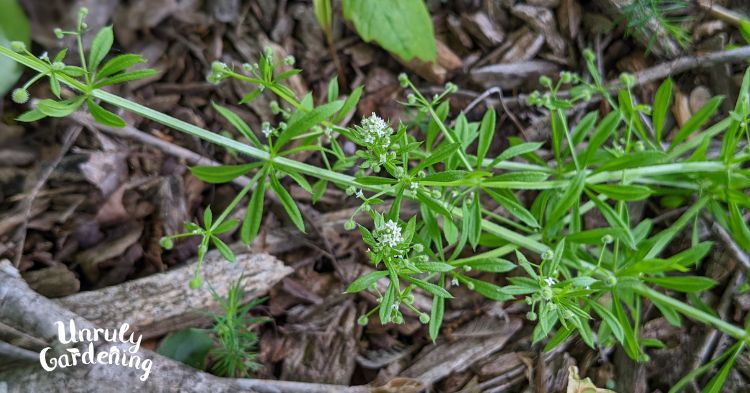
Thank you for this post – we’ve just moved and discovered mullein all around us – excited to try harvesting and using it 🙂
Hi Krista, So glad you found the post helpful! That’s wonderful to have a great supply of mullein to enjoy!
Are the buds useful & how do I harvest them?
Hi Leslie! Mullein flowers are best picked at the height of their flowering. You could include some of the not-quite-opened-yet buds with the flowers, but the tightly closed green ones need a little longer to mature before picking.
This is my first year harvesting mullein. I want to use it for teas, tinctures and for smoking to cut down and quit tobacco. I have COPD and am really interested in trying this for help. Thank you for the info.
Hi Greg, I’m so glad the information is helpful!
If you haven’t already checked it out – Stephen Buhner has some good information on treating COPD on his site.
Here’s one his pdfs on the topic – the rest on his main site I believe: (or just google stephen buhner copd and info should come up)
https://www.stephenharrodbuhner.com/wp-content/uploads/2020/02/COPDprotocol3.txt.pdf
I usually pull the whole mullein plant roots and all and I take off the Bad leaves at the bottom. I washed the least very well with the roots and then I hang the whole plant upside down and let it dry completely and then I take the lease and I crush them up I’ve never used the route but I think I’m going to try now to make the tincture tincture for the back pain. But I have bronchitis every year I get a pretty good case of it but I can make tea from that and I mix it with slippery elm, bay leaf, and thyme. And then I sweeten it with honey. Or if I’m having a really hard time breathing I would take some of the dried leaves and make a I guess I’ll smoke out of them I put them in a non-stick pan and I burn them and then I breathe in the smoke and it helps open up my lungs so that I can breathe but if you do it in the winter time if it’s below 60 degrees outside don’t go outside for at least 30 minutes because you will get pneumonia
Hi Brenda! Thank you so much for sharing your mullein experiences with us! ❤
Thankyou for your information site.. looking forward to trying the tea..
Hi Melissa, I’m so glad you found the information on mullein helpful!
I am suffering from chronic back pain and want to get away from the pain medication that doesn’t seem to help anyways and would like to try the mullein root, my question is do I leave the roots in the vodka and how long is the shelf life? And Thank you for All the wonderful information 🙏🏼❤️🙏🏼
Hi Michelle! You want to leave the roots in the vodka for at least 4 to 6 weeks.
You can strain & use then, or I usually use some then but leave the roots in for a longer time period (an extra month or two) to make sure it’s nice & strong.
Strained tincture has a long shelf life of at least one year, but many kinds will stay good longer than that.
The book, Treat Your Own Back by Robin McKenzie, has also been a helpful resource coupled with the tincture.
Hope you’re able to find some relief for your pain! ❤
I have 70 plants and I don’t know what to do with them
I found out last year, the different stages of the plant and this spring, I’m ready to harvest a couple
I’d like to sell 50 of them or so
Hi Glenn, What a great resource to have! Have you checked out selling on Etsy?
Some sellers on there have good success selling dried plant materials and/or products made with them:
https://www.etsy.com/search?ref=tab_search&q=dried+mullein
is the long stalk used after the flowering? I realized after the fact that I was to harvest early in the season and can the stalk be used there is a lotta plant there!
Hi LS! The dried stalks can be used to make candles or torches (dipped in wax or pine resin), and mullein stalks are also used as kindling, or for bow drill fire making.
I would like to make a tobacco/nicotine free chew. Would using mullein leaves be safe to use? I would like to make them into a long leaf chew. Everything I find about making tobacco free “tobacco” is for smoking and I am not sure those blends would work for chew. Thank you for any help.
Hi R! This is something that I looked into years ago, when my husband was trying to quit a 20+ year tobacco habit.
The challenge was trying to get a mixture that was soft and not like you were chewing on dried leaves.
I couldn’t figure it out at the time, but he eventually found success making hard candies to suck on instead.
https://thenerdyfarmwife.com/diy-herbal-cough-drops/
If you do experiment, I don’t see why mullein leaves couldn’t be added since they’re nontoxic and technically edible, however, they have very fine hairs on them, so you’d want to make sure the dried leaves are sifted so those hairs don’t irritate your mouth.
Good luck with your experiments! Let us know how it goes!
Hi, I have dried my leaves, do I put them in a food processor to grind them? I’m worried it will make a powder
Hi Nancy! I like to keep dried herbs in larger pieces, and only grind them smaller in a coffee grinder when I’m ready to use them.
However, that’s more an issue for aromatics, where you don’t want the scent to evaporate as quickly – like mint, sage, rosemary.
In the case of mullein, it’s fine to break down to smaller pieces if you’d like.
You could try pulsing them a few times in a food processor and see if you like the resulting texture. I think a coffee grinder works a little better, but have used a mini food processor for herbs as well. 🙂
Does mullein tea or tincture cause heartburn?
Hi Lori! It shouldn’t normally cause heartburn, but it’s possible you have a personal sensitivity or allergy to that plant.
If you’re having any negative effect then I would stop taking it.
I was diagnosed with herd years ago. Since drinking mullein tea I’ve had no issues with acid reflux or heartburn.
Hi Brenda, That’s great to hear! Thanks for letting us know!
Can i crush mullien leaves to store them? Or will they lose their potency?
Hi Maxine! You can go ahead and crush them if you’d like. I try to keep herbs in a more whole state & only powder them when I’m about to use, but mullein leaves are pretty bulky, so in that case it might make more sense to at least crumble them more finely for storage. 🙂
Thank you so much for this information. It helped me greatly!
Hi Carrie, We’ve so happy you found the information helpful! 🙂
Hey I love this, and I’ve always been interested in herbal remedies. I’ve had chronic migraines for years And I was wondering if you knew any books that would be specific to head pain herbal remedies? it might be a long shot but I figured I’d ask. Doctors aren’t even trying and it’s really difficult. thanks for the info!
Hi Onyx, Sorry to hear about your migraines! We’re not sure of a book specific to head pain herbal remedies, though that would be awesome if someone would write one.
We do have some experience with (almost) eliminating longstanding migraines.
Everyone is so very different, but some things you may want to explore, that we personally found helpful include: eliminating all sources of caffeine, chocolate (that was a hard one!), C – B – D (from FlowerChild is our fave brand), magnesium supps, using a standing desk versus typing away in a computer chair all day, and the final thing that almost eliminated migraines was a root canal on a rarely bothersome tooth that had been ignored for 15+ years, but apparently was triggering nerve pain in the temple.
Pain salves on the neck, back shoulder blades & temples are a coping option:
If warmth helps, try a warming pain salve:
https://unrulygardening.com/spicy-salve-recipe/
or if cool helps, try things like peppermint:
https://www.reformationacres.com/2016/04/peppermint-pine-headache-salve.html
Topical St John’s wort is another option:
https://unrulygardening.com/st-johns-wort-oil-salve/
I hope you’re able to soon find the triggers and solutions for your migraines! <3
Why are some of my dries mullein leaves turning black? Should I throw them out?
Hi Pam! Sorry to hear they’re doing that! If they’re still in the drying stage – then they may be in too large of pieces, or maybe you have too much humidity for them to fully dry.
If they were dried then stored in an air tight container and then turned black – then they probably weren’t dried quite enough.
I would throw out the black ones and then run the ones that are still good through a dehydrator or even your oven (preheat to lowest heat, turn off the oven, keep door cracked & lay the mullein in single layer on a pan inside)
Then store in a folded paper bag so they can still get some indirect air flow.
I am using making tea with
Mullein and am drinking it 3 to 4 times daily, it has helped to clear the mucus in my lungs and what a difference it’s made for me, I’m also making it for my grandson as he has asthma and it is really helping him. My question is o make him a big jug and is it ok to leave it out at room temperature, as he doesn’t like it cold? He prefers to fro k it at room temp and how long can a 4 litre jug sit out at room temp? He drink this 3 times a day.
Hi Gaby! Herbal tea can stay out of the fridge for about two hours.
Maybe you could make a batch & store it divided into several small jars in the fridge, then pull one out about an hour before you want to drink it, so that it reaches room temp safely.
That’s so wonderful to hear how helpful mullein is for both you and your grandson! 🙂
I have enjoyed your article, but I don’t know about harvesting the leaves. Can you take some of the leaves without destroying the plant, or do you just pull up the entire plant at the suggested harvest time?
Hi Delton, So happy to hear you enjoyed the article!
I just take a few leaves from each plant and leave the rest of the plant in place to keep growing.
Mullein is very hardy and tough, and can usually handle several leaves being removed with no problem.
I only pull up a plant if I want to harvest the root.
New fan of mullein & recently started foraging myself. My kids & I discovered an area where a few plants grow while we were collecting some dandelions & wild green onions. Wondering if there’s any advice or ideas of ways to make use of the root as well??
Hi Tammy, What fun for you and your kids to find some wild plants to explore! 🙂
I use the root to make a tincture for back pain:
Just scrub up, wash, and chop the root, then tincture it right away while it’s still fresh.
I use 1 part chopped root and cover it with 2 parts high proof vodka/everclear.
We use this remedy for back pain, but herbalist jim mconald has more information you might find helpful in this article (for using it for things like urinary tract issues & nerve pain):
https://www.herbcraft.org/mullein.html
There’s also a good link within his article to a pdf about using mullein that’s a good read for those interested in learning more about mullein.
I hope these ideas are helpful & that you have lots of fun foraging and learning with your kids! 🙂
Do you have to harvest Mullein root before it flowers or is it ok to do so after? Mine is flowering now and I’m wondering if I’m too late. Thank you!
Hi Nicole! Traditionally mullein roots are harvested from plants before they flower.
From what I understand, based on a passage from The Earthwise Herbal Volume 1 by Matthew Wood, this is at least in part because herbalist Jim MacDonald uses the first year roots based on them containing the “intelligence” for the plant to grow straight in the second year (i.e. this is why mullein tincture helps straighten the spine).
You can look around your flowering mullein plant and see if you have any first year plants nearby to harvest from.
If not though, and if a flowering plant is the only option you have, then I would personally go ahead and use that.
I don’t always follow herbal root harvesting best times; if I really need a mullein root in the moment, I would go ahead and harvest from what I have available regardless of the timing. 🙂
Hello and thanks for your incredibly helpful article! I recently discovered 2 mullein plants growing in the garden of our new home and this last month, it’s really sprung up tall and begun to flower. I read that it is a biennial plant… and flowers during its second year. Does this mean that they will die off after this year? If so, I may harvest the entire plant, roots included. My husband has back pain, and rheumatoid arthritis, so I’m thinking my a root tincture could be helpful for him. I’d like to continue to grow it though… in that case, should I cut the stalk back low to the ground? Or leave it tall and only remove individual leaves and flowers? Harvest one from the root and leave the other?? Thanks for any input you can offer:)
Hi Liz! Yes, the flowering ones will die off this year.
If you look in a wide area around the general location where your flowering plants are at – you just might find some young plants that you could dig up instead.
They’ll look like a small rosette of fuzzy leaves and often go unnoticed unless you look carefully.
If you don’t find any young ones though, you could dig up one of your mature plants for the root and to harvest the leaves and any flowers that are on there.
Then leave the other one alone for now, so that it produces seed – this will give you lots of first-year plants to work with the next year! 🙂
been growing and foraging for about 10 years now, also managing several honeybee colony’s. beekeepers burn a smoke pot when doing a hive inspections. when I read people smoke mullein, thought to use it in the smoker . it has a wonderful aroma and I think bees are even calmer.
Hi Ron, That is such a great idea – thanks for sharing! We need to do hive inspections here soon and are 100% going to try this out!
Is it safe to take cold medicine otc while drinking the tea?
Hi Brenda! While mullein is generally considered safe for most people, I’m not exactly sure how it interacts with over the counter products, or how it will work for particular situations.
You’ll want to check with your pharmacist or doctor to be certain. 🙂
I live in NE Louisiana and have never found mullein growing. I just ordered some seeds (like 100 of them). I know I won’t need that many. My question is once planted, how long is the growth period before you can begin harvesting? Is there a specific season to plant them?
This will be a whole new experience for me.
Hi Gina! Mullein is most often planted in the spring. Just scratch up the soil a little, scatter the seeds, and tamp them down by walking over the area or using your hands to press the soil.
Don’t cover them deeply because they need light to germinate.
Keep a watch on the area and you should see some leaf rosettes forming the first year, they should get really noticeable in late summer & then you could harvest a few for the root and leaves, saving the rest of the plants to grow and flower the next year.
my 7 volunteer plants are 1st year and almost 7ft tall. I cannot reach the flower heads, some of which are 2ft long. should I harvest the smaller newer leaves at the top or is any healthy leaf ok? Do I leave the plants for the following year?
Hi Heather! If the plant is flowering, then that means it’s in its second year or final phase of growth.
During the first year the plant is just a little rosette of leaves that is harder to notice.
Once the plants finish flowering, they will die off, so I would harvest what you want now – any healthy leaves & flowers if you can find a way to reach them.
But, leave some of the flowers and seed stalks so that it will drop seeds and hopefully next year, you’ll have even more volunteers to enjoy! 🙂
Loved your article! I just found a few million plants back in our pasture along the woods. There are a few older plants, one completely brown and the other the flowers are all gone, but it’s not all dried up yet I also found one new plant that is only about 4 inches tall (no flowering or stalk). I was wondering if any of the plants could be dug up and transplanted (it’s August in Missouri ). I’d love to move them closer to our home, if possible. I I also have a lot of seeds… When should they be sewn, and how is that done? Thank you for any information you are able to give!
Hi Jacquelyn, So happy to hear you enjoyed the article and how wonderful to find such a bounty of plants! 🙂
I would try growing from seeds first, since mullein has a large taproot that doesn’t like to be disturbed.
Some plants are especially tricky to transplant during the heat of August, so if you do want to try moving one of the smallest ones, I’d try it a little later in the year when it’s cooler.
How to grow from seed is right here in the article:
https://unrulygardening.com/growing-foraging-mullein/#how-to-grow-mullein-from-seed
Just direct sow outdoors where you want the plant to grow – sprinkle on the surface of the soil and tamp down. They need light to germinate.
They’re most often planted in spring, but you could try some fall sowing too to mimic how nature does, let them overwinter & pop up in the spring.
Mullein seeds will stay in the soil’s seedbank for years and years!
I know it’s well past spring, but, can I harvest the roots that are in the 2nd year and make a tincure from them?
Hi Melissa! Yes, you sure can. First year plants are normally used, but I have used second year plants as well & it seemed to work fairly the same. 🙂
I am interested on how to do the roots for uti,I hate going to the Dr. for antibotic cause usually they don’t work, I got an bladder infection 2-3 times a year. Can you tell me how to cook the roots..
Hi Christine! There’s more information about using mullein for urinary tract problems in this pdf issue of Medical Herbalism journal:
https://medherb.com/eletter/Mullein-Sinadinos.pdf